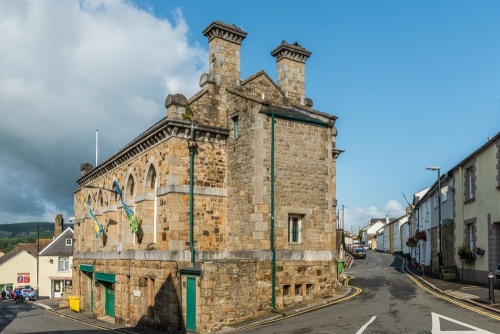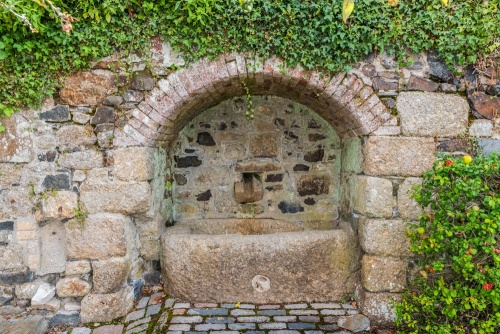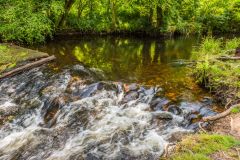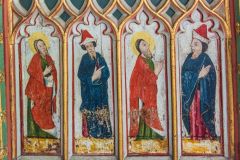
History
Legend tells that one member of the family, Sir Henry de Tracey, built the parish church of St Peter, Paul, and Thomas of Canterbury in remorse for the role played by his relative, William de Tracey, in the murder of Thomas a Becket in 1170. Unfortunately, there seems to be no evidence to support this claim.
The 12th century Manor House on East Street may have been de Tracey's dwelling. In 1259 a later De Tracey was granted the right to hold a weekly market and an annual 3-day fair.
The church is notable for its 14th century west tower and collection of late medieval misericords. The most impressive historic feature, however, is the finely carved rood screen.

Set into the churchyard wall is a holy well dedicated to St Mary and sometimes known as the 'Golden Well'. A legend attached to the well tells the story of a priest and his wife who offered shelter and food to a stranger.
The stranger proved to be St Mary, to whom the church was then dedicated. She blessed the well, saying, 'here is living water for yourself and the church'. The priest and his family were blessed with good fortune for generations, and from that day forward the frogs that dwelt by the well were coloured golden as a reminder of St Mary's promise.
Further down East Street is a row of almshouses built in1910 in memory of Mrs AM Tracey (d. 1902) and her son PM Tracey.

Cromwell's Arch
A medieval gateway known as Cromwell's Arch is all that remains of a medieval priory on the site now occupied by the Baptist church. Or is it? No historical record mentions a priory here, so where does the archway come from?

There is a fascinating Civil War story linked to the town. In early 1646 the town was a base for a Royalist regiment under Lord Wentworth. The Royalists were caught unprepared when Oliver Cromwell led soldiers into Bovey Tracey under cover of darkness and captured over 400 horses. Though they also captured several officers playing cards in an inn, many more escaped.
A persistent legend suggests that the Royalists escaped by tossing coins from windows to distract the poorly paid Parliamentary troops. In the confusion caused by the Parliamentary soldiers scrambling for money in the street, the Royalists were able to escape.
On the following day, Cromwell met and defeated a Royalist force outside town, in what has been dubbed The Battle of Bovey Heath. The Heath is now home to a nature reserve run by the Devon Wildlife Trust.

The old railway station is now home to the Bovey Tracey Heritage Centre, with displays on local history. Another historic building is Riverside Mill, built in 1854 to supply water to a nearby house.
Just outside the town is Parke, once a country house but now owned by the National Trust. The Parke estate offers riverside walks through woodland and past a medieval weir.









 We've 'tagged' this attraction information to help you find related historic attractions and learn more about major time periods mentioned.
We've 'tagged' this attraction information to help you find related historic attractions and learn more about major time periods mentioned.




